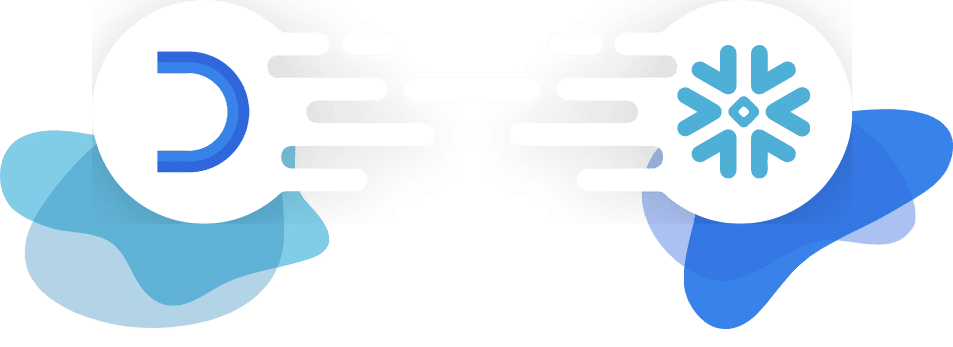You use Dayforce and your payroll, HR, or maybe your executive team is asking for data for reporting or perhaps other downstream operations. Maybe you don’t need a data warehouse, but you know that you need that data. One of the first steps in building a Dayforce data integration flow or even a data warehouse is obviously to get a connection to your Dayforce account instance using dlh.io. This can be done easily by creating an account where you will establish your connectivity to your Dayforce account. Being able to obtain all of your information from your Dayforce account is critically important to be successful with Dayforce data.

When you have all of your Dayforce data in one place you’re able to then transform the data outside of the Dayforce platform, or perhaps just pass it through as raw data for your data scientist or data engineer to work on. Not only can your Dayforce information be used to support key metrics but you’re also able to then enrich that data with some of your other data source systems that are critical to running daily operations. This will give you the ability to forecast against actuals, determine how payroll, employee punches, and even revenue is impacted by increases in activity by employees, and so much more.
But what about getting that dayforce data into a system like Snowflake, Databricks, SQL Server, Synapse, or something else downstream in your data lake so that you can start doing amazing forecasting, enrichment and Artificial Intelligence use cases that really move the needle for your business.
Because Ceridian Dayforce is a comprehensive human capital management (HCM) platform that streamlines various HR functions, including payroll, workforce management, talent acquisition, and benefits administration, so much of your organization’s data is living inside of Dayforce. For data analytics and even AI the question for your organization is how will you extract that data securely and consistently to get the insights your team needs to make your organization distribute that information.
This is especially important when you have other processes you need to automate with, or enrich with to have the fullest amalgamation of data to drive automated insights and other transport of information through the organization. While Dayforce provides robust built-in reporting and analytics, organizations often need to integrate this data with other enterprise systems to gain deeper insights. This is where a dedicated data warehouse comes into play. DLH.io is the best platform the integrate your dayforce data.
A data warehouse consolidates Dayforce data with other business information, enabling powerful analytics, reporting, and decision-making. In this blog post, we’ll explore why building a data warehouse for Dayforce data is essential and how it can help organizations unlock valuable insights.
Why Build a Data Warehouse for Dayforce Data?
1. Centralizing Dayforce Data for Holistic Analysis
Many organizations use multiple applications for finance, sales, and operations, in addition to Dayforce for HR and payroll. By integrating Dayforce data into a data warehouse, businesses can centralize data from different sources, allowing for a holistic view of workforce performance, financial trends, and operational efficiency.
2. Enhanced Data Automation, Analytics, and Reporting
Dayforce offers built-in reporting, but organizations often require customized, cross-functional reports that combine HR data with other business metrics. A data warehouse enables:
- Advanced analytics on workforce trends, turnover rates, and employee productivity.
- Custom dashboards for executive decision-making.
- Real-time insights by leveraging business intelligence (BI) tools such as Power BI, Tableau, or Looker.
3. Improved Data Consistency and Accuracy
Raw data from multiple systems often has inconsistencies due to different data structures, formatting, and naming conventions. A data warehouse standardizes and cleanses this data, ensuring consistency, accuracy, and integrity across reports and analytics.
4. Historical Data Retention and Trend Analysis
Dayforce may store limited historical data depending on system configurations and retention policies. A data warehouse enables long-term storage of historical HR and payroll data, allowing organizations to:
- Track workforce trends over time.
- Forecast hiring needs based on historical patterns.
- Analyze compensation changes and workforce demographics.
5. Performance Optimization and Scalability
Running complex queries directly in Dayforce can slow down system performance. A data warehouse allows businesses to offload analytical queries, keeping Dayforce optimized for daily operations while providing a high-performance environment for analytics.
6. Compliance and Audit Readiness
HR and payroll data is often subject to strict regulatory requirements. A data warehouse helps organizations maintain a complete audit trail of changes, ensuring compliance with labor laws, tax regulations, and industry standards. Additionally, having centralized, well-structured data makes it easier to generate reports for audits and compliance checks.
7. Seamless Integration with Other Business Systems
A data warehouse serves as a bridge between Dayforce and other enterprise applications such as ERPs (SAP, Oracle), CRMs (Salesforce), and financial management systems. This integration provides a unified view of workforce data in relation to company performance, sales, and budgeting.
How to Build a Data Warehouse for Dayforce Data
To successfully build a data warehouse for Dayforce data, organizations should:
- Define Business Goals – Identify the key insights and reports needed from the data warehouse.
- Extract Data from Dayforce – Utilize Dayforce APIs or data export tools to extract relevant HR and payroll data.
- Transform and Clean Data – Use ETL (Extract, Transform, Load) tools like Fivetran, Talend, or Azure Data Factory to cleanse and normalize data.
- Store Data in a Scalable Warehouse – Consider cloud-based solutions like Amazon Redshift, Google BigQuery, Snowflake, or Microsoft Azure Synapse.
- Implement BI and Analytics Tools – Connect BI tools to the warehouse for visualization and analytics.
Finally
Even if you just need the data from dayforce reports, or just to consistently get the dayforce data for more data engineering or data science needs, DLH.io is your best option. Building a data warehouse for Dayforce data is a strategic move that will empower your organization with deeper insights, improved reporting, and seamless data integration across business functions. By centralizing dayforce HR and payroll data, you can drive data-driven decision-making, optimize workforce management, and enhance overall operational efficiency. Investing in a well-structured data warehouse and reliable data infrastructure unlocks the full potential of Dayforce data, transforming raw information into actionable intelligence – or just plain access to data that you need.



